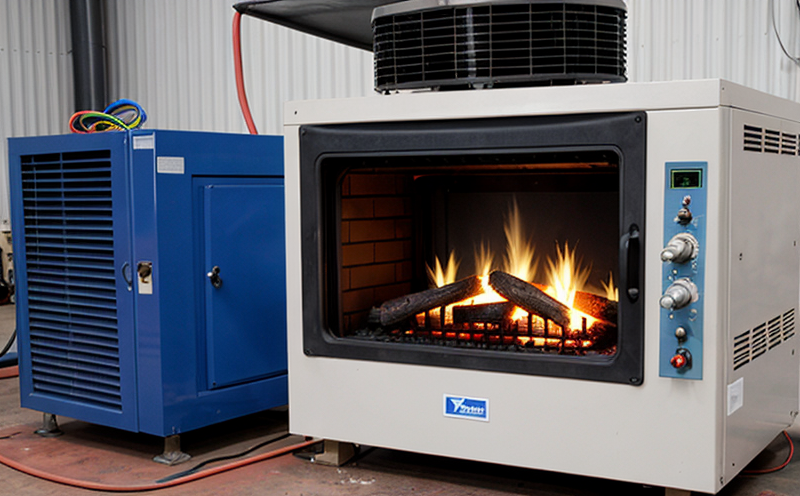IEC 60811 Thermal Aging Testing of Cable Insulation for Lighting Systems
The IEC 60811 standard provides a framework to evaluate the thermal aging behavior of cable insulation in lighting systems. This testing is crucial for ensuring that cables used in lighting installations can withstand the rigors of prolonged service, especially under conditions of high temperature and continuous operation.
Thermal aging tests are designed to simulate real-world operating environments where cables may be subjected to elevated temperatures over extended periods. The objective is to assess how the physical and chemical properties of the cable insulation change due to heat stress, thereby predicting their long-term reliability and performance. This testing ensures that lighting systems remain safe and effective throughout their operational lifecycle.
The IEC 60811 protocol involves subjecting samples of cable insulation to controlled temperature conditions for a specified duration. The test setup typically includes an oven or similar apparatus capable of maintaining precise temperature control within narrow tolerances. Specimens are exposed to high temperatures, often exceeding ambient levels by several degrees Celsius, and held at these elevated temperatures for durations ranging from days to weeks.
During the testing period, careful monitoring is conducted to observe any changes in the physical properties such as tensile strength, elongation, and flexibility. Additionally, chemical analysis may be performed to assess degradation of insulation materials. Compliance with IEC 60811 ensures that lighting systems meet stringent quality standards, providing peace of mind for manufacturers and end-users alike.
The results from these tests are invaluable in enhancing the design and manufacturing processes of cable insulations used in lighting systems. By understanding how different factors contribute to aging effects, developers can make informed decisions regarding material selection and process optimization. This not only improves product performance but also extends the service life of lighting installations, reducing maintenance costs and environmental impact.
| Test Parameter | Description |
|---|---|
| Temperature Range | Typically between 70°C to 90°C, depending on the standard requirements. |
| Duration of Exposure | Varies from several days up to a few weeks based on specific application needs. |
| Type of Specimen | Involves cable samples representing typical installation configurations. |
| Data Collected | Includes mechanical and chemical property changes over time. |
The IEC 60811 thermal aging test is a critical component of the quality assurance process for lighting systems. It helps manufacturers adhere to international standards, ensuring product reliability and safety. By incorporating this testing into their development cycle, companies can enhance customer confidence and satisfaction while meeting regulatory requirements.
Benefits
- Ensures compliance with IEC 60811 standards for cable insulation in lighting systems.
- Improves the reliability of lighting installations by simulating long-term operational conditions.
- Promotes safer and more durable products, enhancing overall user satisfaction.
- Aids in identifying potential issues early in the product lifecycle to facilitate corrective actions.
- Simplifies regulatory compliance through standardized testing protocols.
Industry Applications
- Lighting manufacturers ensuring material integrity for long-term installations.
- Design engineers incorporating thermal aging data into product development.
- Quality assurance departments verifying adherence to international standards.
- Procurement teams selecting suppliers based on test results demonstrating reliability.
- Regulatory bodies validating compliance with safety and performance requirements.
Use Cases and Application Examples
- Residential Lighting Systems: Ensuring longevity in home lighting installations by evaluating cable insulation under high-temperature conditions.
- Commercial Buildings: Providing robust solutions for large-scale indoor lighting projects where continuous operation is crucial.
- Outdoor Lighting: Guaranteeing durability and reliability of streetlights and other public illumination systems exposed to varying weather conditions.
- Industrial Environments: Testing cables used in factories or warehouses that operate under extreme heat or cold.
| Use Case Scenario | Description |
|---|---|
| Residential Lighting Systems | Evaluating the performance of cable insulation in a typical home setting where ambient temperatures can rise significantly during summer months. |
| Commercial Buildings | Demonstrating how the tested cables perform under continuous operation over extended periods, such as in office buildings or shopping centers. |
| Outdoor Lighting | Assessing the resilience of outdoor lighting systems that may be subjected to harsh environmental factors like heat and humidity. |
| Industrial Environments | Testing cables used in environments where temperature fluctuations are common, such as factories or warehouses. |





